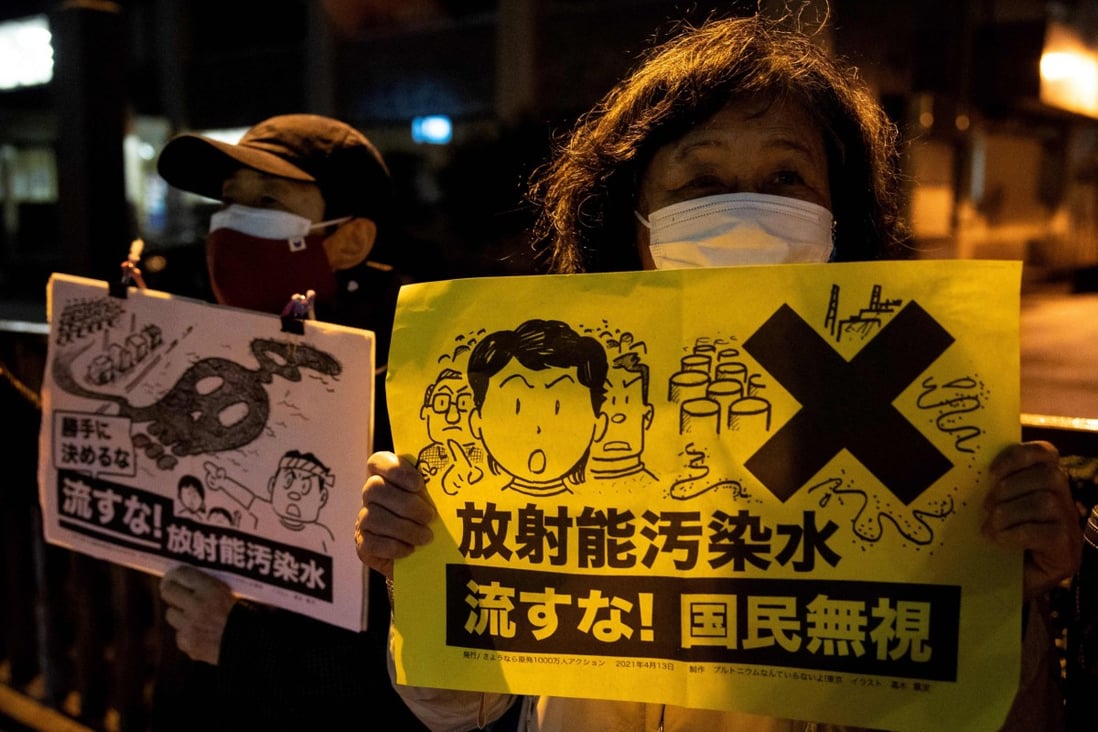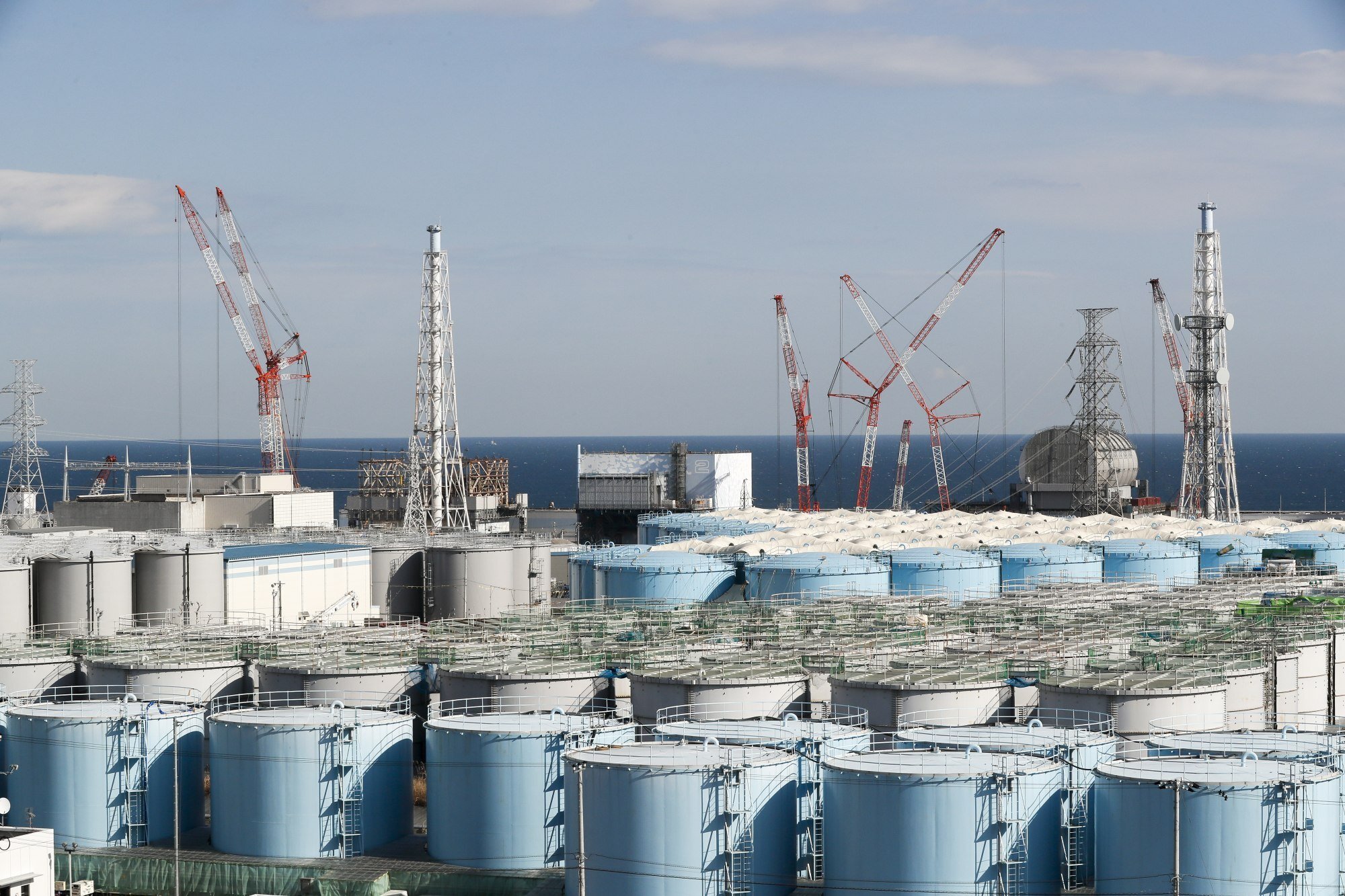
Experts and environmental groups have taken issue with the Japanese government’s insistence that releasing water contaminated with radiation from the Fukushima nuclear plant into the Pacific Ocean is the best solution to the problem, accusing the authorities of ignoring perfectly viable alternatives for a cheap “quick fix”.
They point out that the government’s announcement on April 13 has already provoked so much anger at home and abroad – South Korea has already confirmed that it is planning to take legal action to halt the release and other nations may join its campaign – that the decision may seriously damage Japan’s international reputation.
Prime Minister Yoshihide Suga on Tuesday said that “disposing of the treated waters is an unavoidable issue for decommissioning the Fukushima Daiichi plant”.
He added that the water would be released “while ensuring that safety standards are cleared by a wide margin”.
Is Japan downplaying the danger Fukushima water poses to human health?
Tokyo says that releasing the water is the best option as the water has been treated to remove contaminants. The authorities admit that tritium cannot be removed from the water, but insist it is not harmful to human health.
Experts dispute that claim and add that there has been no independent testing of the water to verify that other nuclides are at “non-detect” levels, as was previously promised before the water was released.
The government said it reached the decision after examining five methods of disposing of the 1.23 million tons of contaminated water that is presently at the site, as well as an estimated 456,000 tons of water that will accumulate over the next decade.
The water was contaminated with high levels of radioactive nuclides – including strontium 90, ruthenium 106, cobalt, tellurium and iodine 129 – after being used to cool three reactors at the site that suffered meltdowns after the earthquake and tsunami of March 2011. The water pooled in the basement levels of the reactor buildings and the problem was exacerbated by leaking groundwater.
An additional 210 tons of water builds up at the site every day and Tokyo Electric Power Co and the government argue that they are running out of space at the site and that another natural disaster could rupture the hundreds of tanks containing the contaminated water, causing a new environmental crisis.
A Ministry of the Economy, Trade and Industry task force that oversaw the debate on the water disposal narrowed the possibilities to discharge into the sea, vapour release, injection into rock strata far below the surface, dumping into concrete pits that would then be sealed or combined with hydrogen and released into the atmosphere.
China warns of action if Japan dumps Fukushima water into the sea
Both the underground burial and geosphere injection proposals would require the crafting of new legal standards, which would be time-consuming, while finding a stable location was another concern, the panel said.
The hydrogen option, while technically feasible, would require massive investment and construction of facilities at the site, which would also take some time, while the vapour release suggestion was not appealing because it would be difficult to monitor and control where the output subsequently fell.
Ultimately, the panel concluded that as releasing water with low concentrations of radiation was accepted in other nations that operate nuclear power plants, that was the best option at Fukushima Daiichi.
Hideyuki Ban, co-director of the Tokyo-based Citizens’ Nuclear Information Centre, said he was “very angry” at the decision and accused the government of “ignoring the opposition of local people”.
“It is said that there is no space for additional tanks at the site, but this is not true,” he said. “Concrete proposals have been made by many citizens’ groups, including on ways to continue storage and to avoid release through a process of mortar solidification.
“At the same time, there is no need to rush the removal of the fuel debris and the decommissioning road map should be fundamentally revised.”

Azby Brown, lead researcher for the nuclear monitoring organisation Safecast Japan, said the idea of simply constructing new tanks at the site and storing the waste water until a better solution was developed “does not appear to have been seriously considered at any point”.
“The argument was that it would be better to deal with it more quickly as the tanks would rust and could break in the future,” he said, but pointed out that as the half-life of tritium is just 12 years, then storage was a viable option to some degree.
“I have myself asked if they considered building more tanks outside the perimeter of the site, but the answer was that it would be ‘too difficult’ because they did not own the land,” Brown said.
That excuse is weak, he suggested, as the land surrounding the site is heavily contaminated with fallout from the original disaster, with farmland lying fallow and local communities long evacuated.
Brown said he believed that pouring the water into the Pacific Ocean was tacitly agreed as the solution fairly soon after the 2011 accident, with the International Atomic Energy Agency going on the record in 2014 as supporting dilution and release, a position quickly backed by Japan’s Nuclear Regulatory Agency.
“From the beginning, it looked as if the decision had already been made and they were just going to wait for public opinion to calm down before they announced the plan,” he said. “It was a done deal; they just needed the outrage at Tepco to simmer down and for people to forget.”
Why is Japan going to dump radioactive Fukushima water into the sea?
Shaun Burnie, senior nuclear specialist for Greenpeace, said there was an urgent need to reconsider the 40-year time frame set by the government for returning the entire plant to a “greenfield site”.
“The fundamental issue is that the source of the contamination – the 600 to 1,100 tons of molten fuel debris – is very far from being resolved,” he said. “And until that problem is isolated from the environment, and the groundwater, then there is no end to the contaminated water problem.
“The enormous elephant in the room is that Tepco’s road map for decommissioning is unworkable, flawed and doomed to failure,” he said.
In the proposals drawn up by Greenpeace, there should be a shift from water cooling of the molten fuel to air cooling and the digging of a 7km moat around the entire site to a depth of 20m that would create a “dry island” and prevent more groundwater from coming into contact with the reactors.
By stopping additional water building up, attention could be focused on developing new technologies to effectively eliminate all nuclides in the water, Burnie said, at which point it could safely be released.







